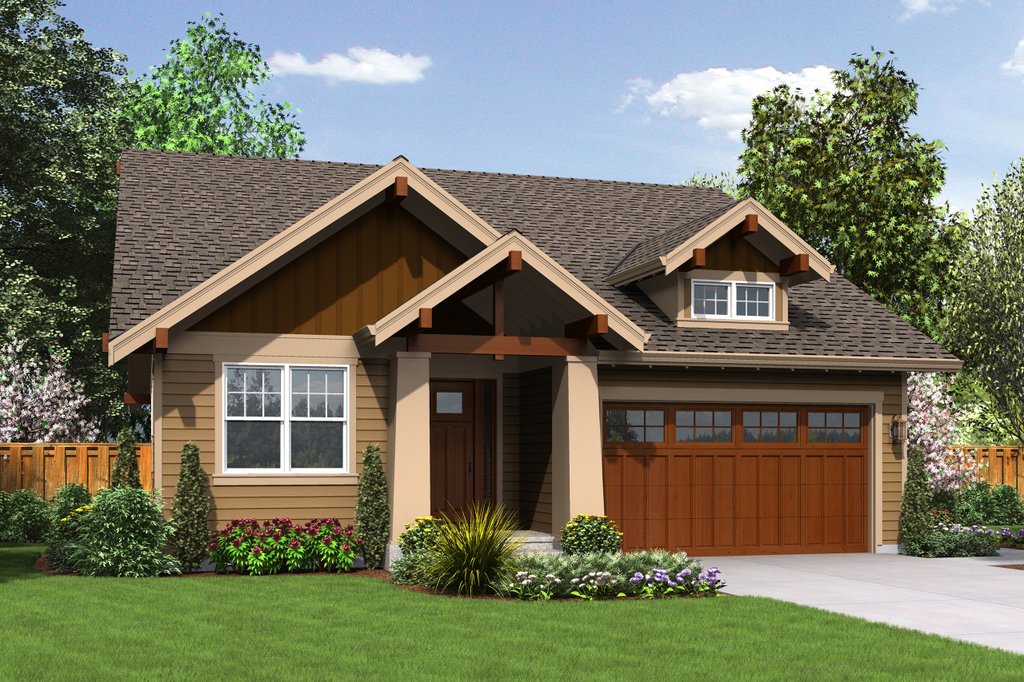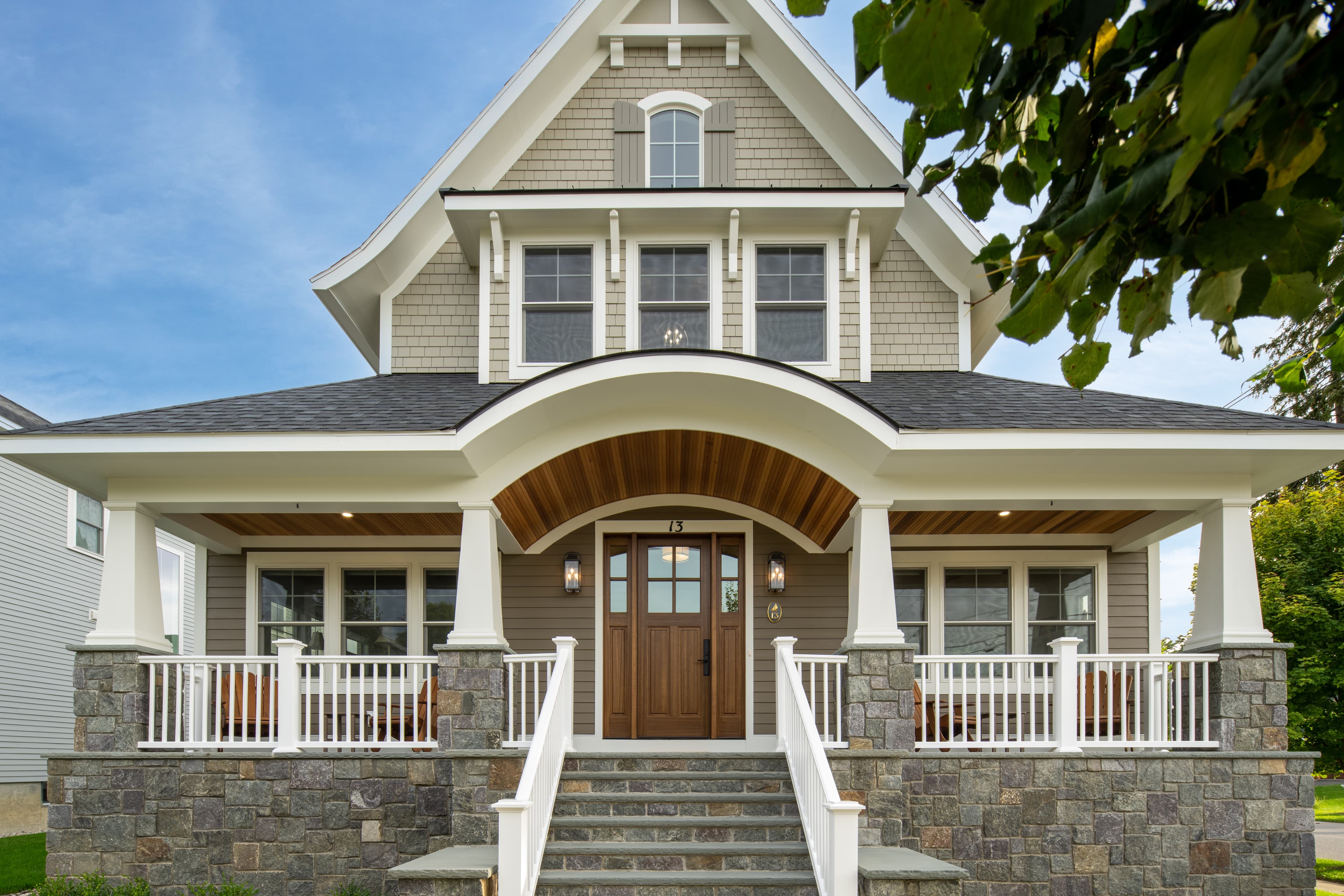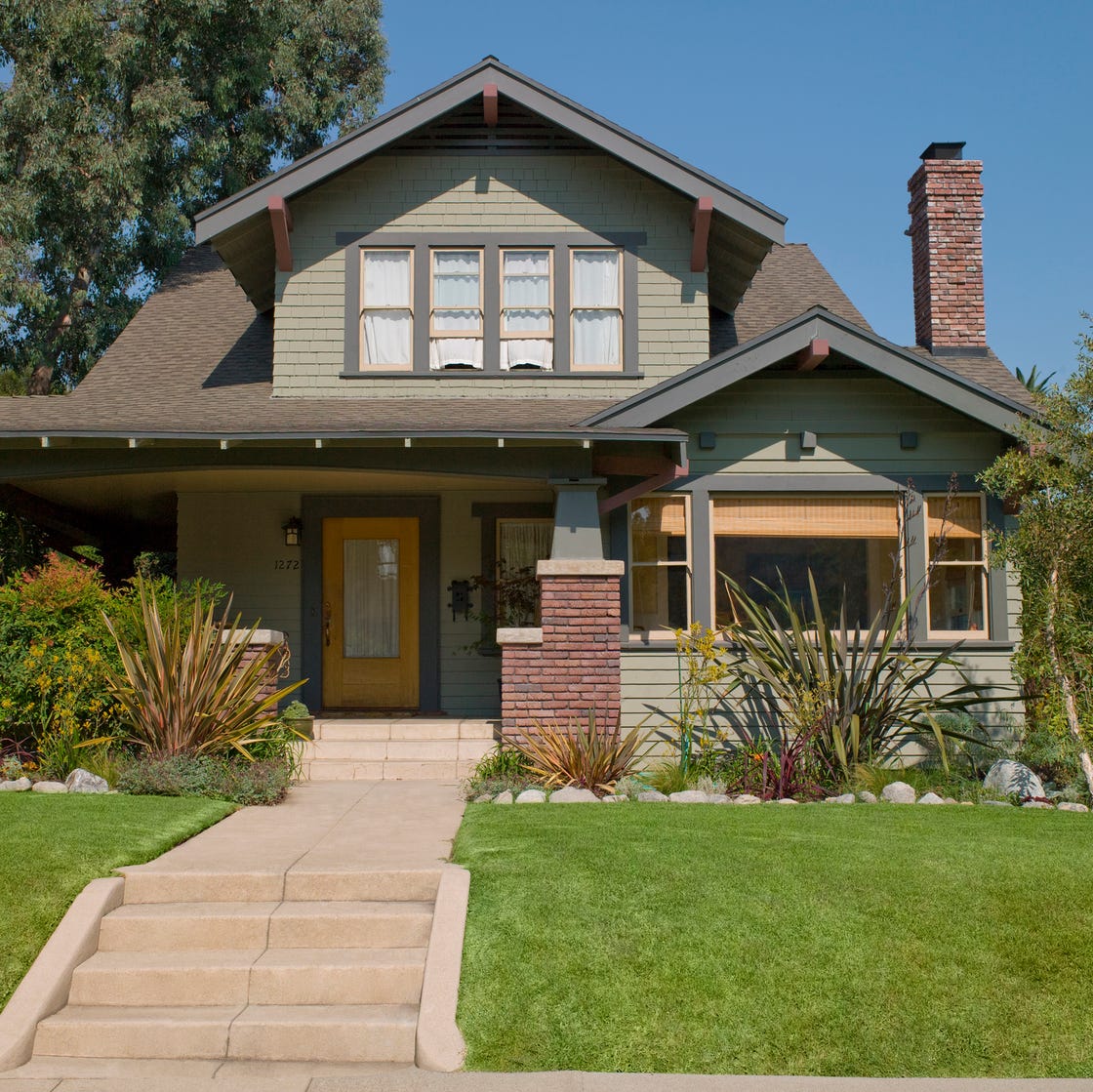Breaking Down the Sustainability Features of a craftsman style house
Wiki Article
The Function of Arts & & Crafts Architects in Elevating Architectural Services in Residential Layout
Arts and Crafts architects substantially influence residential design through their commitment to workmanship and sustainability. They focus on handcrafted information and all-natural products, which enhance both aesthetic appeals and area identification. By including customers in the style process, these architects develop unique home that resonate with individual preferences. This approach raises inquiries regarding the future trajectory of household architecture and its possible influence on community characteristics. craftsman style house. What exists in advance for this classic style viewpoint?
The Concepts of Arts and Crafts Architecture
The essence of Arts and Crafts architecture depends on its commitment to craftsmanship and simplicity. This architectural activity arised in the late 19th century as an action to industrialization, emphasizing the worth of handmade details and natural products. The concepts of Arts and Crafts architecture prioritize functionality and consistency with the setting. Frameworks commonly feature low-pitched roofing systems, large eaves, and subjected rafters, advertising a feeling of unity with nature.Artisans played a substantial function in this style, typically incorporating ornamental elements like discolored glass, tiles, and woodwork, which show regional craftsmanship. The shade combination has a tendency to be earthy and restrained, allowing structures to mix flawlessly into their environments. On top of that, the layout encourages open layout and common areas, cultivating a sense of togetherness. In general, the principles of Arts and Crafts architecture celebrate the charm of simplicity and the importance of human link to both nature and neighborhood.

Lasting Practices in Residential Layout
While the demand for eco liable living remains to expand, lasting techniques in residential style have gotten substantial grip among architects and house owners alike. Architects are progressively incorporating energy-efficient technologies and sustainable products right into their designs, aiming to minimize carbon impacts and improve power preservation. Techniques such as easy solar style, green roof coverings, and rainwater harvesting systems are becoming typical elements of modern household architecture.The selection of locally sourced materials reduces transportation discharges and sustains regional economies. Focus on all-natural light and air flow not just enhances indoor air quality however also decreases dependence on artificial illumination and climate control systems. These sustainable methods mirror a commitment to maintaining the atmosphere while providing property owners with comfy, efficient home. As recognition of environmental problems expands, the integration of sustainability in household design is positioned to end up being a specifying characteristic of contemporary architecture, assisted by the concepts developed by Arts and Crafts architects.
Modification and Customization in Home Layout
Customization and customization in home layout have actually emerged as key trends in response to the growing need for distinct living environments that show private tastes and way of livings. Home owners increasingly seek to customize rooms that reverberate with their individualities, bring read more about an extra significant link with their home. craftsman style house. This movement urges architects to involve clients in the style procedure, fostering cooperation that ensures the last outcome personifies the house owner's visionElements such as bespoke layouts, custom-made materials, and customized finishes allow for a varied variety of expressions in domestic design. Arts and Crafts architects play a crucial role in this evolution, stressing craftsmanship and high quality. Their concentrate on incorporating imaginative components with capability assurances that each home is not only cosmetically pleasing yet likewise uniquely matched to the citizens' requirements. As a result, this focus on customization boosts the overall residential experience, producing rooms that are both personal and long-lasting.

The Influence of Arts and Crafts Architects on Area Aesthetics
As areas progress, the influence of Arts and Crafts architects significantly shapes their visual landscape. By emphasizing handcrafted details, all-natural materials, and standard construction techniques, these architects produce homes that resonate with their environments. Their styles commonly include local flora, appearances, and colors, fostering a feeling of consistency between built settings and nature.Furthermore, the Arts and Crafts movement advertises community identity via building connection. By urging home owners to adopt comparable style concepts, areas develop a cohesive character that boosts aesthetic charm. This architectural harmony not just improves the aesthetic experience but also instills a sense of pride amongst citizens.
Moreover, the emphasis on sustainability and craftsmanship in Arts and Crafts architecture aligns with contemporary worths, making these designs appropriate in modern settings. Ultimately, Arts and Crafts architects contribute considerably to the general beauty and social honesty of areas, leaving a long lasting influence on their aesthetic tradition.

Future Patterns in Arts and Crafts Architecture
With a boosting focus on sustainability and customization, future patterns in Arts and Crafts architecture are poised to blend typical workmanship with modern innovation - craftsman style house. Architects are likely to prioritize eco-friendly products, utilizing recovered wood and all-natural rock to enhance the sustainability of domestic styles. The check here integration of wise home modern technology will certainly end up being commonplace, enabling personalized living experiences without endangering visual honestyFurthermore, the revival of artisanal methods will certainly cultivate a restored admiration for handmade elements, such as bespoke cabinets and personalized tile work. Future styles may likewise reflect an emphasis on community-oriented rooms, encouraging find communication and connection amongst citizens. Outside living areas will acquire importance, flawlessly integrating nature right into the home setting. As Arts and Crafts architecture progresses, it will certainly remain to recognize its roots while adapting to contemporary requirements, creating unified areas that reflect specific values and way of livings.
Frequently Asked Inquiries
What Motivated the Arts and Crafts Motion in Architecture?
The Arts and Crafts movement in architecture was influenced by a response versus industrialization, emphasizing handcrafted quality, natural materials, and a return to standard craftsmanship, intending to produce unified, useful rooms that celebrated creativity and individuality.How Do Arts and Crafts Architects Collaborate With Clients?
Arts and crafts architects team up with clients through open discussion, prioritizing personal demands and aesthetic appeals. They emphasize workmanship and sustainability, fostering a partnership that integrates the client's vision with the engineer's proficiency in layout and materials.What Products Are Frequently Used in Arts and Crafts Residences?
Typical products in Arts and Crafts homes consist of all-natural timber, stone, and block, highlighting workmanship and organic looks. These elements develop a warm, inviting ambience, reflecting the movement's dedication to quality and simplicity in layout.Exactly how Do Arts and Crafts Styles Enhance Indoor Living Areas?
Arts and Crafts layouts improve indoor living areas by promoting natural light, open flooring plans, and handcrafted details. These components foster a cozy, welcoming environment, encouraging a link between citizens and their environments through thoughtful, functional visual appeals.What Are Some Famous Instances of Arts and Crafts Architecture?
Famous instances of Arts and Crafts architecture include the Gamble House, Greene and Greene's work of art in California, and the Robie House by Frank Lloyd Wright. These structures display handcrafted details and consistency with nature, specifying the activity's essence.Report this wiki page